#this poem has had a few different iterations over the years since coming out and i'm finally happy with this version
Explore tagged Tumblr posts
Text

when mary oliver said tell me about despair, yours, and i will tell you mine i said bet
#oh no they're writing poetry and posting it on the internet!!#oooh bby turning the abject into something holy!!!#this is actually getting published :)#this poem has had a few different iterations over the years since coming out and i'm finally happy with this version#poetry#trans#creative writing#my fav line is break open my ribs#/ take back the spare and i'll make my body worth it#i literally got the mary oliver quote wrong when i originally posted this fake fan :(#top surgery#new dad lore dropped after this poem got published and oooh boy does it make things even more sticky!!!
14 notes
·
View notes
Text
Hymnstoke XIII
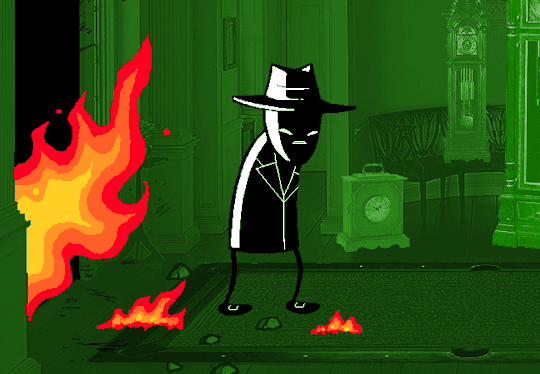
Have you heard the story of bladekindEyewear the Blind?
In infinite folly, this man strapped knives to his eyeballs, depriving himself of sight. Nonetheless he was known as the wisest man in Homestuck Tumblr, with a wicked pack of classpect analyses. As Homestuck progressed through its lengthy sixth act, he developed a wide sleight of theories as to how it would end and what it would mean when it ended that way, focused most famously on each character's SBURB class and aspect (classpect for portmanteau).
When Homestuck ended, and then ended a second time, he turned out to be wrong.
In a recent post, he made this comment about his wrongness:
BlastYoBoots 04/26/2019: part of why all my theories were wrong is that they were arrogant and misguided and just all-around regrettable and I thought I "knew" what Andrew morally wanted out of a story when he wasn't after the same thing at all
I bring this tale to your attention not to drag our Sosostris through the mud. In fact, I'd say he's unduly harsh on himself here. He may indeed have had a decent grasp of Hussie's moral purposes regarding Homestuck—in 2013. It has been a long six years since then, during which Hussie followed in the footsteps of other noted New England authors J.D. Salinger and Thomas Pynchon and vanished off the face of the planet. It would be fair to theorize that what Hussie "wanted" out of Homestuck changed considerably in those years. And the truth is, because Hussie has disappeared so utterly, any illusion of knowing his "moral" goals has completely dissipated. It's not even clear at this point how much of the Epilogues he wrote. What statements can possibly be made about authorial intent outside of baseless conjecture?
Mr. Eyewear had the unfortunate position of writing critical analysis of a work that was not yet finished, a position not often imitated by critics throughout the ages. It's relatively easy to look at a work by a long-dead author and make some grand, sweeping statement that "this is what it means." Because the author is literally dead, Death of the Author becomes much less controversial to apply. Even now, after the dust has settled, a new installment of Homestuck may unexpectedly arrive that obliterates any previous critical insight on what Homestuck "meant." Homestuck is ostensibly over, but the Epilogues left plenty of room for continuation.
Someone who read the previous Hymnstoke installments came to me and said (paraphrased), "Do you really think Hussie knows anything about Gnosticism? It's far more likely he googled it and used a few names here and there to sound smart." Thinking about it, I wouldn't be surprised if this turned out to be his modus operandi for the Pale Fire and Waste Land quotes I wrote so lengthily on in previous Hymnstokes as well. Wouldn't it make so much sense if Hussie googled "Literary quotes about April" and put in the Waste Land quote without ever having read the poem, without understanding its historical or literary context?
Would it matter?
Hussie may or may not be ignorant of literary history, or his own literary moment. In that Stanford interview he flatly denied any knowledge of "post-irony." But the author's ignorance doesn't excuse the work from the world. Homestuck itself is rapidly becoming a historical work, fading from the immediate cultural consciousness. Yet it has left a mark. How many works will be created in the coming years that draw heavy inspiration from Undertale, which itself was heavily inspired by Homestuck? And if we take Homestuck's most explicit inspiration to be Earthbound, what works inspired Earthbound? What works inspired the works that inspired Earthbound?
Whether Hussie knows what DFW stands for or not is inconsequential. Homestuck is not a work in a vacuum, neither the beginning nor the end. Con Air, the Greek Zodiac, Insane Clown Posse—whether the reader knows what those things are doesn't matter within the space of Homestuck, because Homestuck invented new meaning out of them all. Whether Hussie, the author, knew what Gnosticism, post-postmodernism, or Dadaism were—I would argue that is similarly inconsequential. Homestuck repurposed all of those -isms, either knowingly or unknowingly, into something new. It is the act of repurposing that is the most important part, not whatever those things were before.
So bladekindEyewear observed Homestuck through the lenses of knives strapped to his eyes. From that perspective, he conceived of what the facts (the text of Homestuck) "meant." I'll also be looking at Homestuck through a certain lens. Neither lens is the same as Hussie's lens. No lens except Hussie's can be Hussie's lens: that is something the postmodernists realized, that "truth" was fragmentary and differed from person to person. Perhaps even different within each person; the Hussie of 2013 may have a different lens than the Hussie of 2019. Put succinctly: No absolute truth exists.
But Homestuck, I feel, moves beyond the problems proposed by postmodernism. In Homestuck, differing lenses, even completely opposite lenses like "irony" and "sincerity," "science" and "magic," "time" and "space," or "author" and "reader" (as seen in the Epilogues) become blurred, indistinguishable, ultimately reconciled as essentially the same thing. It's that reconciliation that I think is Homestuck's most meaty—or candiey—thematic component.
With that in mind, let's continue.
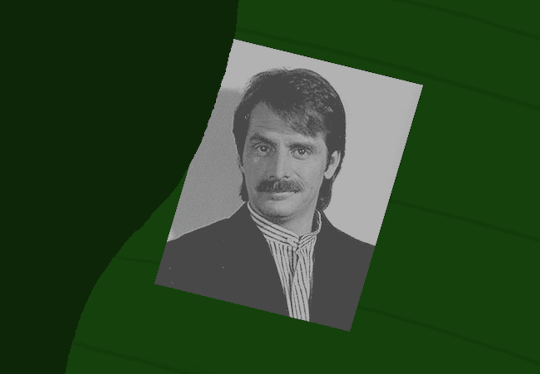
What is under the rug is much worse than any trap you can imagine.
It is a member of a species that you do not recognize, with a ghastly furred upper lip.
I don't even know who this is. Jeff Foxworthy? I guess I might not be a redneck.
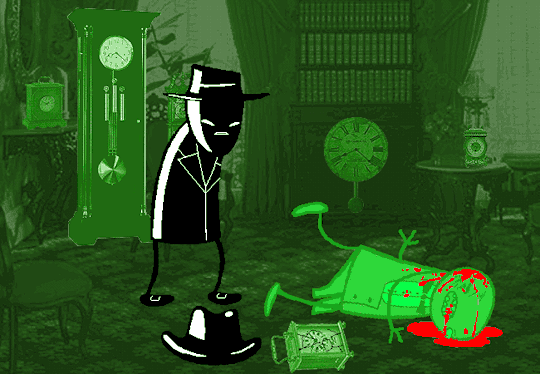
Soon these lugs will learn to show you some respect. You made this town what it is after all. Wasn't nothin' but a bunch of dust and rocks before you got here.
Okay. I was right. I knew it, all along when I was reading the Epilogues I knew something was off. I felt certain, and now it's been confirmed for me.
Homestuck does not use smart apostrophes, while the Epilogues did.
For those not in the know, a smart apostrophe is curved based on the text that comes around it, like so: ’
A regular apostrophe, by comparison, is not curved: '
As you can see in the quoted text, Homestuck proper uses your regular dumb apostrophes. Which is good, because smart apostrophes are the devil. They frequently get slanted the wrong direction and conflict aesthetically with Homestuck's monospaced, geometric Courier font. Yet all throughout the Epilogues, smart apostrophes are used. It drove me insane. I hate those things.
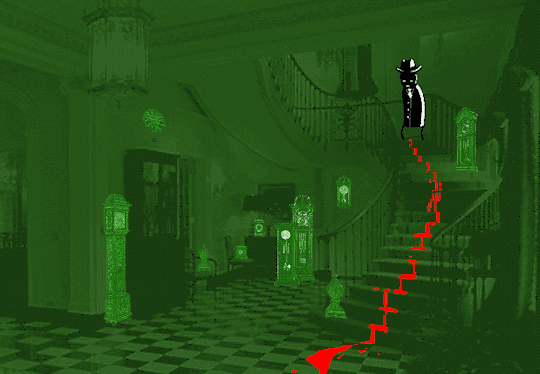
Can't overthink this time stuff.
I guess I should actually talk about the Intermission. Internally, it's pretty straightforward, borrowing liberally from Problem Sleuth. But what exactly is its purpose? Yes, on a purely plot level, elements of the Intermission return in Act 5. Spades Slick remains a character who exists all the way until Collide, although he is one of the unfortunate casualties of Act 6's awful ending and is too dead to get any kind of relevancy redemption in the Epilogues, unlike similarly extraneous Act 6 characters Jane and Jake.
Fundamentally, then, the relevance of the Intermission extends only as far as Cascade, with elements malingering longer but never amounting to anything new. Many things will extend only as far as Cascade, which eventually becomes Homestuck's midpoint. In earlier Hymnstokes, I mentioned a few times that I didn't think I had much to say about Act 5. I said that because, while Act 5 is impressive from a technical standpoint, it's a lot less dense in meaning compared to early Homestuck or Act 6. It functions a lot like a machine with many perfectly-placed parts (or rather, parts that were retroactively made to look perfectly placed, depending on how improvisational you think Hussie wrote) that slot together like a machine, rifle, or clock to create a flawless cascade of storytelling. I'll talk more about this kind of "clockwork storytelling" when I actually get to Act 5, but for now one might consider the entire Intermission to be one of those perfectly-placed pieces, and the Spades Slick storyline culminates in Cascade to slot alongside the other pieces in a satisfying way.
One might also interpret the Intermission as a primer for certain elements that will become important in Homestuck proper, such as the aforementioned "time stuff" that gets its first real exploration here before becoming a convoluted but finely-wrought entanglement in Acts 4 and 5. Toss in vague foreshadowing to Lord English and the Intermission's existence is at least purposeful, regardless of whether one considers it necessary.
But what about structurally? I mentioned in the previous Hymnstoke that the Intermission is similar to Act 5 Act 1 and Act 6 Act 1 in that it dramatically downscales the tension, introduces a slew of new characters, and shakes up the tone of the story. Each of these three parts are nostalgic for "Old Homestuck," the Homestuck that is more like Problem Sleuth, and they feature many text commands and faffery like what you see in Act 1. By juxtaposition, then, each emphasizes how far Homestuck has developed across its run, and the differences only become more striking each successive iteration.
The Intermission is probably the fragmenting point. In Homestuck proper, there are no more kids to introduce. John, Rose, Dave, Jade, for each of them we've cycled through the database-structured INTERESTS and INSTRUMENTS and WEIRD PARENTAL FIGURES. Bit by bit that kind of content will vanish in favor of a new sort of storytelling, and the Intermission is where it becomes obvious that this is happening. Jade's introduction already subverted most of the established tropes, and the Intermission reads like a parody of them, with the Midnight Crew's set of traits being plaintively ridiculous (each keeping a different kind of candy in their backup hat, each having a different kind of smutty material, et cetera). Act 5 Act 1 will also be parodic in its approach to these database traits, but I think in a less effective way, as the differences between the kids and the trolls are less extreme than the differences between the kids and the Midnight Crew. Furthermore, the Intermission really drives the nail into the coffin of Problem Sleuth, severing Homestuck finally from its predecessor. Act 6 Act 1, by comparison, is more of a wistful yearning for Act 1 than any kind of new take—which might itself be meaningful in the grand scheme of things.
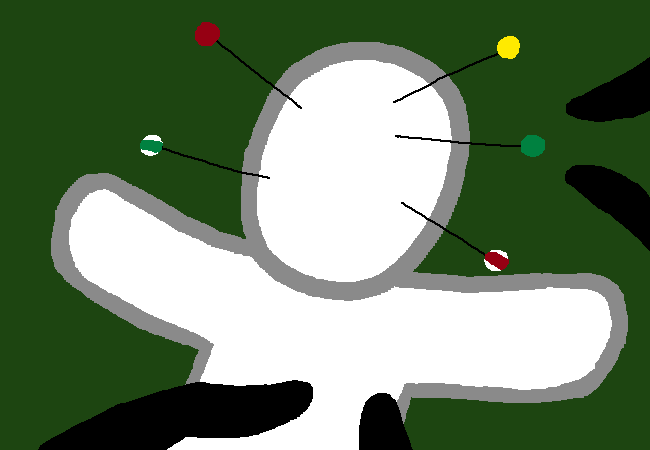
Still, it might come in handy down the road. Lord English is supposedly indestructible. He's rumored to be killable only through a number of glitches and exploits in spacetime. The doll may ultimately help you work the system if it comes to that.
This line, along with the way Problem Sleuth ended, was probably the primary driver that led to people expecting a final boss fight with Lord English on par with the one with Mobster Kingpin. Although the Epilogues were a fantastic ending, it's still underwhelming to think about just how poorly-conceived Collide and Act 7 turned out to be. Of course, the Problem Sleuth sort of ending is definitely more of a "clockwork" storytelling style, and Act 6, as has become clear by now, has a much different style.
Dirk, the ultimate inheritor of the clockwork style—he specifically describes storytelling in terms of machines—has as one of his INTERESTS robotics and technology. Lord English, likewise, is surrounded by a clockwork motif. Of course, these characters will eventually become explicitly linked via the method of Lord English's creation. But unlike many other INTERESTS, which turn out to be irrelevant, this machinery fascination ties in to Homestuck's final thematic dichotomy. But more on that when we reach the Epilogues.
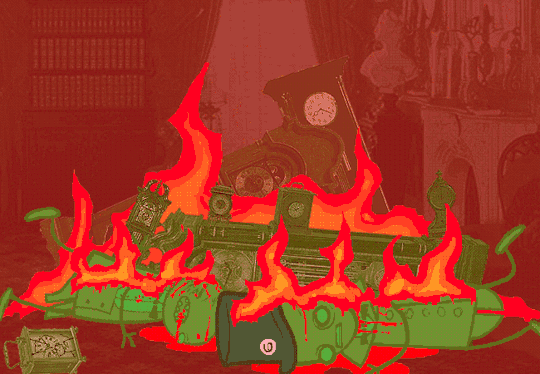
29/1000 CLOCKS DESTROYED
I guess we know what side of the dichotomy Spades is on.
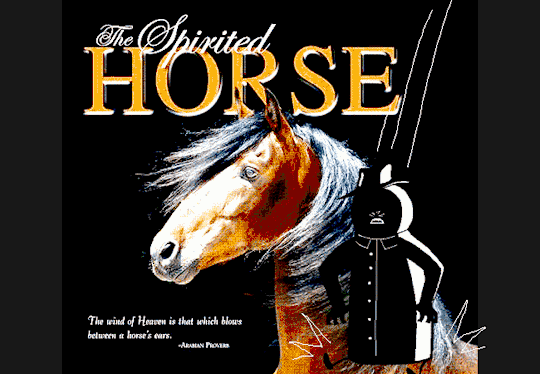
This is the same calendar Dirk has in his apartment in Act 6. I remember I once had this theory that the Midnight Crew would be reunited at the end of Homestuck even though the B2 Hegemonic Brute was dead because it would be revealed that Hearts Boxcars was still in Dirk's calendar and would come out riding Dirk's mini Maplehoof.
I don't know why I had this oddly specific theory, and it was probably obvious it wouldn't happen.
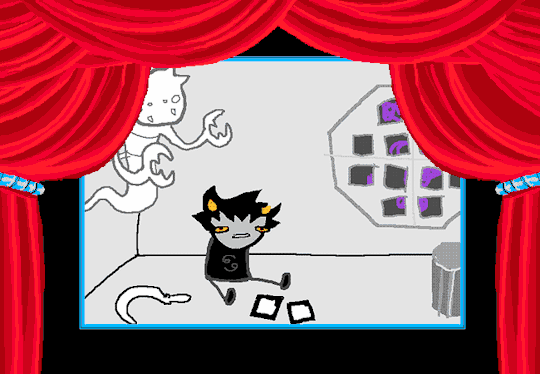
And thus ends the intermission, with an eye toward the next bizarre deviation in the storyline (Act 5 Act 1).
It's been awhile since I last read Homestuck. My memory of Act 4 is dodgy, so I might actually stumble upon something new. But as I mentioned earlier, the Intermission is the big, obvious breakpoint between the old, Problem Sleuth style of Homestuck and the new, clockwork style. The database-driven character creation will gradually fall away (minus a parodic revival in Act 5 Act 1) and narrative elements will become more consistently introduced with an eye specifically toward Cascade. For many people, this is when Homestuck starts to "get good," and I think it's because there's something innately satisfying about a finely-crafted machine slotting into place. There is a kind of intrinsic beauty about it, art for art's sake if you will, and that is also what seems to draw Dirk toward it.
But more next time.
78 notes
·
View notes
Text
for once, i’m not ranting.
I’m not waiting for the downfall either, when I say that things are actually turning out well.
part one: the org.
The warzone that used to be the college org that had pulled me in about a year ago, has become something like a congress or courthouse. It’s not yet a perfect democracy, but at least it’s no longer a one-man army. Maybe it’s just my war flashbacks - a term I’ve quite recently learned to call my officer initiatives as - talking, but I really am proud that it’s quickly coming to a close.
I authored 80% of a constitution, designed new branding schemes, appointed key bearers of the legacy, and hauled in the footholds for a well-connected and reputable college organization. In the end, I stumbled with the unfamiliarity of what I’ve achieved. I’ve grown so used to doing everything on my own that I almost forgot that I was leaving, that I should be training others to be as open to receiving new learnings as I had when I started out. For the younger ones, I’m the org mentor that I never had for myself.
It’s weird, it’s heart-expanding, it’s inspiring to see progress. And especially when you’ve been working for it all along.
But it hurts - just as much - to have to give it up, just as it teeters towards the peak of its greatness.
part two: the internship.
By luckiest stroke of fate, by some divine intervention, by some alignment of stars that still boggle me til now, I got into the best internship I think I could ever have signed up for.
I got into an IT consulting firm that specializes in UI/UX web and mobile development and design. Coding and UI, my unexplored specialties. My graphics design team are made up of UI/UX designers, and they allow me to learn their trade without being pressured to keep up with their standards. They were literally assisting me in coding my thesis website, but that wasn’t the best part.
The firm allowed for flexi-time, which meant I could clock in anytime in the work week as long as I got to finish at least eight hours. My supervisor always came around 10am-7pm, and I always arrived earlier and left later than him. I’m determined to do as much work as I can for the whole day; I can almost go 12 hours with minor breaks and coffee lmao.
The supervisor is an alumni of my course. He had taken his college life easier than me, and him being like that allowed me to think that hey, even if you don’t graduate this school at the top, you can still get by if you have the guts and the grit. And that’s what I’m developing right now. I occasionally ask for time off work to attend to org duties and thesis emergencies, but I still do deliver for the internship. Yep, while senior high taught me that I had a voice, college taught me how to use it and use it well.
part three: the thesis.
I know where to use my voice for: to talk about what no one does. My undergraduate thesis talks about civics education: the umbrella concept for how people are taught about politics, society, and democracy. It’s a personal advocacy that stemmed from questions about nationalism and patriotism, from reading about history surrounding Rizal, and being immersed in the novels themselves. Writer as I am, I simply can’t help the latter.
The multimedia thesis a print card game about Rizal’s civic activities, that aims to teach civics education to Grade 10 students. Paperwork and pre-production almost done, this iteration is down to the last few tweaks until we can squeak past proofreading, user testing, and market testing.
For the record, I myself stressed over the website for the last few weeks that not only had the UI/UX designers at the internship had stepped in and offered some tips, but that I seriously had to take days off work just to finish it. When I finally eked out half, my thesis adviser said that I should have focused on the game instead, since the website was only a marketing tool. Within that same day, I churned out all 63 cards (one still had its illustration underway) out of 2 ginormous PSD files, ready for proofreading and printing. The night burned me out quite bad, but at least that load quickly finished...
part four: the story.
Coupled within the week, a good friend had asked help for his animation thesis, which was an advocacy story he was to animate in VR. I’d promised my help long ago, and I delivered: a five-page draft script, complete with concrete visualizations and directions of how he’ll execute it in VR.
I couldn’t have been prouder of this collab. I’ve always wanted to be a story artist - someone who visualizes stories and writes them as well - the only thing holding me back is my lack of experience in drawing for animation aka my degree. I could be helping all his classmates with their animation stories, he says, with how much I’m able to use film techniques, symbolisms, dialogues, and colors to fully execute his VR animated story. My degree is siphoning me into the ad industry, but in this collab, I learned what it’s like to be the visual director, the story artist. Not only was it fun, it was actually really fulfilling to be able to write with animation!
The collab also demonstrated that two people - in all their differences and similarities - can still be on equal ground if they work together. This collab taught me what it truly means to be loyal, to have each other’s back not out of duty or responsibility but because you chose to learn when you chose to stay.
part five: the burnout.
The weekend after demanded at least 12 hours of sleep and mug of warm milk, and ton of chocolate. The burnout was real. My head was ringing from the online calls for the animation thesis, among other things; I was in no mood to do org work nor house chores, not even to draw, write a poem, or squeeze out a chapter. I was tired, physically, mentally.
But emotionally, I was satisfied.
For once, I was satisfied with my week.
Not only with my week, but everything that led up to that. The org. The internship. The thesis. My staying. Everything.
My college life is coming to a close. My time to understand everything, before twenty hits, is fast ending. For once I’m not regretting, for once, I’m not mad.
For once, I’m no longer ranting.
#my diary#My writing#new day#thesis#graduate student#grad life#intern#internship#burnout#story artist#artist#writers#writing#satisfied#personal rant#College things#college#university#studentlife#excerpts from my life#life quotes
3 notes
·
View notes
Photo
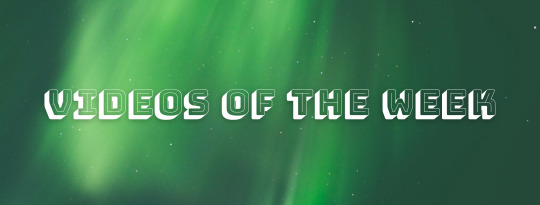
youtube
Tomberlin has shared 'Wasted,' a lullaby-esque stunner about secrets that are hard to keep. Tomberlin engages in some clever wordplay as the song ambles along, each line bleeding into the next: “Can you tell the difference?/ I can tell the difference,” she sings. “Maybe you’re the difference/ Please don’t be indifferent/ I could make it different. "'Wasted’ was the most fun song to record. I brought the song with the guitar part and knew I wanted drums, but wasn’t sure what kind of beat I wanted,” Tomberlin said in a statement, continuing: "Alex played this drum beat for me and was all ‘kinda left field but maybe this would be cool.’ It took the song to a whole new level. Sad song or summer banger? You tell me. The video was made with the help of Busy Philipps (who directed) and Marc Silverstein (who shot it), who are more like family then friends at this point. I was quarantined with them and their girls in South Carolina and we came up with the idea and shot it in about 4 days on an iPhone." [via Stereogum]
youtube
With their debut EP Tell U set to land on October 30 via House Arrest, New Yorks’ Couch Prints - aka Jayanna Roberts, Brandon Tong, and Jacob Truax - have shared the video for the title track. “I wrote the first iteration of this track while living in Denver - I was working this job I hated and had this feeling that life was speeding by,” Brandon says of the new track. “I ended up moving to New York a few months later, and shortly after Jake came out from Paris to record some of the music we’d been collaborating on the past year. While he was [In Paris] he had worked on music with Jayanna, so he called her to come sing on the tracks. We showed her the tracks and immediately she was humming along and had this incredible tone and way of singing, so we started recording for ‘Tell U’ and finished it that night. With so many moving pieces coming together so serendipitously, the final song came to celebrate this feeling of transience and movement and leaving the past behind. When we gave the song to Mayachka for the music video, she took that wistful feeling and our experiences, and created a story about a supposed three-way love triangle between us - with all the romance and nostalgia of a 2000’s soap opera. It perfectly captured the melancholy and strangeness of our first year coming together.” [via DIY]
youtube
Setting her art rock-inspired single 'Battleship' against a stunning clip directed by Pete Majarich, the new one from Jordan Laser deserves all your attention. [via Happy Mag]
youtube
New Jersey-based artist PYNKIE releases lead single 'Personality' from her sophomore album #37 out October 16 via House Arrest. A self-proclaimed ode to divorce (more specifically Radice’s parents divorce), the track is as sharp and witty as you’d expect from PYNKIE. It possesses this off-kilter touch that we’ve seen her adopt since her self-released 2018 debut album neoteny. The track references specific interactions between PYNKIE’s parents as they fight over possessions in the messy divorce. Lines such as “Furniture, Furniture/Over my dead body” are sung with a delightfully naïve charm, effectively capturing the sometimes obliviousness or misunderstanding that children have when it comes to events of such grandeur. With its buoyant bassline, jangly guitars, stoic percussion and perfectly imperfect slacker vocals, 'Personality' is musically a raw joy to behold. It’s flawless in its mixture of the known and the unknown, expected and unexpected. Skilfully wrong-footing the listener by setting up expectations of direction and then changing at the last minute is something that PYNKIE excels at. Lo-fi ethics and embedded nostalgia have become a staple of her music. This 90s nostalgia also takes the main role in the accompanying Kelli McGuire-directed visuals. We see Radice with her hair in bunches, wearing chokers, double denim that’s been scrawled on in felt tip pen and jelly sandals. The lighting is soft yet colourful with a light fuzz that gives it a retro warmth to it, casting our minds back to childhood. With vibrant graphics breaking up the video, topped off with the karaoke-style lyrics at the bottom of the video, the effect is one of wistful fondness. With its combination of unadulterated playfulness, darker tones and gleefully childish sensibilities, 'Personality' speaks to a larger theme that will carry through the upcoming album #37. [via High Clouds]
youtube
No Joy releases the official music video for 'Dream Rats' from their album Motherhood which is out out. The video and track features frontperson and principal songwriter Jasamine White-Gluz’s sister, Alissa, of deathcore supergroup Arch Enemy. The video also features an amazing duck named Success who is somewhat of a local celebrity in Montreal. The White-Gluz sisters want to take this opportunity to spotlight the Le Nichoir Wild Bird Rehabilitation Centre, a non-profit organization located in Hudson, Quebec. Their mission is to conserve wild birds as part of our natural heritage.
youtube
Actor and singer-songwriter Maya Hawke released album opener 'Generous Heart' as the final preview of her debut LP Blush, out now. A new interview with i-D reveals that 'Generous Heart' is one of Hawke's favourites from her record, and was created from a poem about love that she wrote as a senior in high school. Hawke also revealed the inspiration behind her debut album title to i-D, "I am a person who really struggles with embarrassment and shame, but it’s such a weird thing to talk about. There’s something embarrassing about even talking about being embarrassed. And the word blush, or blushing, to me is this sort of feminised take on embarrassment. Someone will be like, 'Oh it’s so cute, you’re blushing!' But on the inside, you’re dying. I liked the idea of taking this feminised word for shame, and making it the album title - because I struggle with both the feminisation of it, and the thing itself." She adds of the album, "Something that feels really important to me - and the record is sort of all about this - is how, even as you grow up and start to go through more 'adult' experiences, you’re still a kid. You’re still the same person that you always were. And so there’s the need to remember that throughline of your own humanity. I wanted to have those children’s voices to add a reminder of 'this might sound like a woman’s voice, but this whole childhood life is connected through all these stories'." [via Line Of Best Fit]
youtube
GRETA is making waves. The Copenhagen-based German musician - real name Greta Louise Schenk - has peppered 2020 with a string of superb singles, re-casting Nordic pop in a sci-fi gaze. Working towards her debut album, GRETA has been spending time in the studio with Farao, who has been producing those enormously imaginative sessions. New album Ardent Spring Part hits home on September 4, and it's led by the drifting future-facing pop of new single 'Again'. A gorgeous return, 'Again' is GRETA at her most defiant, an attempt to break out the cycles of behaviour that define us. She comments: "It's a song about the patterns we humans keep repeating even though we would like to break them. How we spend our entire life waiting for it to happen instead of living it." Stine Thorbøll directs the video, a tour de force of female Nordic talent that features the likes of Helena Heinesen Rebensdorff (Brimheim), Julie Christiansen (We are the way for the cosmos to know itself), Mary Jean Moore (MARY JEAN) and Luna Matz (Takykardia). GRETA explains... "The video for ‘Again’ is about a transition to something new and about preparing for that change. About being afraid of uncertainty, but finding strength in each other and oneself. It is about taking its place in the world. About strength and vulnerability. It is an invitation to be with everything you are and a promise that everything is more beautiful on the other side." Bold, and hugely imaginative, 'Again' seems to exist on its own terms, a defiantly independent piece of pop music. [via Clash]
youtube
Australian pop/R&B singer Clairy Browne is making her return to 2020 with her dance-worthy hit, 'Not The Only'. Drenched in glamour and extravagance, Browne has dropped an atmospheric tune with anthemic hooks and enthralling choruses. 'Not The Only' signals a new chapter for the artist as she breaks away from her kitsch retro-pop sound and explores a new neon-tinged soundscape. The songwriter is gearing up to release her next EP ANGEL later on this year and we’re curious to see what else she’s got in store for us. [via Wonderland]
youtube
In these dark and uncertain times, there’s no arguing that we need some relief, and fast. And one act giving us an instant burst of feel-good energy and sonic elation is MRCH with their glittering electronic number 'I Like You'. Drenched in optimism and bouncing into life with retro 80s-style synths, undulating rhythms and ethereal vocal hooks, the Phoenix-hailed duo – made up of Mickey and Jesse Pangburn – are lifting spirits with the synth-pop dance floor filler. The track is the first offering from their forthcoming new EP, out later this year – and has fans excited for their usual riveting live performances when life resumes. The visuals are a trippy retro throwback with the pair bopping and jamming, and making us miss a full throttle hedonistic night out. “Making songs is how we tell ourselves we aren’t alone, and hopefully how we tell other people they aren’t alone either,” explains Mickey. “Ironically, the hardest year for us has produced perhaps the cheeriest of MRCH songs, and absolutely one of our favourites.” [via Wonderland]
youtube
The artist Elohim has been an enigma since she first broke on the scene a half decade ago. She's since stepped out from behind the anonymous persona she originally crafted, and through her tender exploration of mental illness in her art, has reached millions of fans — proving true authenticity has no labels. The Los Angeles-based artist and producer was in the midst of her headlining Group Therapy Tour when the coronavirus pandemic hit, and like so many artists, she had to step back from performing live. But she quickly recalibrated and has been performing live from her home studio — and also working on the visuals for her single, 'I'm Lost.' The supremely trippy, Chase O'Black video captures the surreal experience of dissociating — something Elohim says she's been experiencing she was 7-years-old. "A lot of the art I create is speaking about these experiences (i.e. hallucinating)," Elohim tells NYLON. "'I'm Lost' examines this part of my brain, which is something difficult to put into words, so we decided to share this experience through surreality in the desert. Creating this new music filled my life with the most freeing moments, and making this video felt similar." Take a trip with Elohim to the California desert (and the infamous Slab City — an ideal setting for any artist on an inward journey) with the 'I'm Lost' video [via NYLON]
youtube
Australian pop extroverts Confidence Man return with new single 'First Class Bitch'. The band's extra-dimensional pop activities are the stuff of legend, with their lysergic live shows infused with glorious ear-worm melodies. New single 'First Class Bitch' injects some Confidence Man energy into this quarantine summer, and it's a dazzling return. The central hook is worthy of a Charli XCX project, with the neat, acid house leaning production tapping into the buoyancy of their famed live shows. Singer Janet Planet explains that the title 'First Class Bitch' actually has its origins in London. She comments... “I'd been thinking about this for a while now... It all started in London, when I saw a pair of socks with the words 'first class bitch' embroidered on them, hanging in a shop front window. I suddenly realised, I too was a first class bitch. I rushed back to the penthouse and penned this hit. Ever wondered what you hear when you die? This is it.” [via Clash]
#videos of the week#tomberlin#couch prints#jordan laser#pynkie#no joy#maya hawke#greta#clairy browne#mrch#elohim#confidence man
1 note
·
View note
Link
A wall of surstromming. This canned herring is fermented for so long and is so potent that it fizzes on opening. Photo: Mo Styles
Share
Post on facebook wall
Share on twitter
Share via Email
Pin to Pinterest
Share on Google Plus
I'm sitting in Sture, a dark restaurant in Malmo. Run by chef Jonas Dellow, it marries French techniques with New Nordic cuisine making it very Michelin friendly. The service is slick, the presentation flawless. More importantly, the food itself is delicious – the barbecued pike perch being the best version of that fish I've ever had. Malmo may not quite be Copenhagen in its culinary prowess, but it's no slouch, either.
As I wipe the last of the dessert from my chin, chef Dellow comes out for a quick chat. We shoot the breeze for a while, but in spite of myself, I have to confess to him that I'd actually encountered two of the items from his superlative tasting menu earlier in the day – foie gras and beef tartar. He seems vaguely interested in this, but laughs nervously when I tell him that as well as being on his tasting menu, they're both items in the Malmo's new Disgusting Food Museum.
Less than 10 minutes' walk from Sture, the museum was opened last year as a pop-up, but has proved so wildly popular that it has now had its future secured for 2019. A second iteration has also opened in Los Angeles.
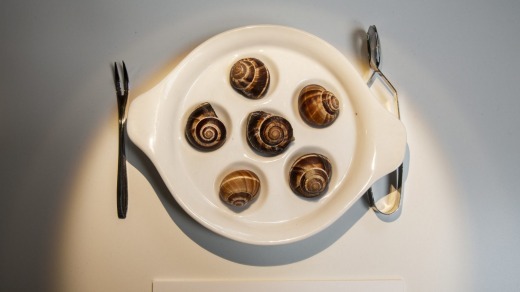
French snails. Photo: Mo Styles
This Swedish original is situated in Slaghuset, an old slaughterhouse that later became a sort of industrial-themed nightclub, before lying empty and finally being repurposed. As museum director Andreas Ahrens jokes, there's always been something disgusting going on here.
Before arriving, I had assumed the main idea was the culinary equivalent of an Edwardian freakshow. Come see the horrors of the Orient! Gaze on the hideousness from darkest Africa! And, among the 82 exhibition items, there are some that do fall into that category. The Sardinian casu marzu is a wheel of pecorino with live maggots boring their way through its centre; the mouse wine is the colour of a deep rose, with dozens of hairless, blind baby mice making a macabre seabed.
Exhibits like that have led to accusations of animal cruelty from people presumably too horrified or impatient or stupid to actually take-in the rest of the exhibition. Despite its name, and despite how much people laugh and learn while they are there, the Museum of Disgusting Food is actually a cleverly disguised sustainability museum.
"We really wanted to find a way to get people to come, but it couldn't just be a sustainability museum – if we'd done that, it would just be preaching to the choir," explains Andreas. "Instead we wanted people to come, to have fun, but to learn without us aggressively pushing an agenda."
An original list of 300 potential items came down to about 80. Almost every week it gets suggestions from visitors, but Ahrens is pretty happy with its current roster. It is designed to be controversial: "We want everyone who comes here to see something on display and say 'this shouldn't be here!' When people see something they eat often, they'll hopefully have the thought that 'well if this is normal for me, then everything here is normal for someone'. Each item we have is either a delicacy or commonly eaten around the world."
There are many selections that, having come from so close to home, feel a little insulting. I am Scottish and the sight of haggis makes me want to lift the little "chieftain of the pudding race" from its plinth and recite a soothing Robert Burns poem to it.
Advertisement
While Scots occasionally grumble about their national dish being here, Andreas tells me that the visitors most likely to complain are Australian. They do not seem to much mind witchetty grubs being on the wall, and few people gripe about Musk Stix but the inclusion of Vegemite is a persistent bugbear.
"They get really upset when they see it," says Andreas. "I've heard that people have been on morning shows, sitting on the sofas complaining that we have it here. I think they're half joking. I hope."
At the start of the museum, the different classifications of disgust are defined – some are conceptually disgusting, some visually. Others may cause revulsion through how they smell or taste. Then there are those, such as the mass production of beef and pork, which are so illogical, so obviously damaging to us and our planet, that disgust seems like the only sensible response.
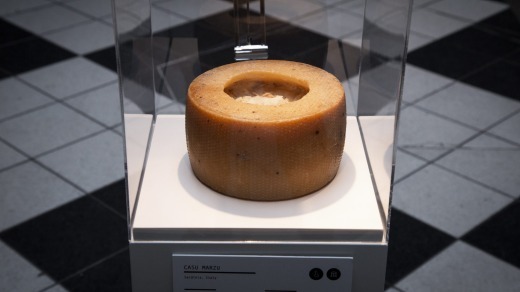
The Sardinian casu marzu is a wheel of pecorino with live maggots boring their way through its centre. Photo: Anja Barte Telin
Disgusting would be about the gentlest term to describe le gavage, the force-feeding of geese to hyper-fatten their livers, a video of which is on show in the museum. (That night, when I'm served foie gras in Sture, I can't really enjoy it because of what I'd seen and resolved to stop eating it in the future.)
Having looked around the entire exhibition, I make my way over to Andreas' counter where he has laid out a sampler of about 10 dishes that had been found in the museum. Behind, a chalkboard lists the days since the last time someone vomited during this bizarre tasting menu.
It starts with dried insects, which are so devoid of flavour as to seem a little unremarkable. Next comes some pungent Swedish caviar and a slimy piece of durian. Both are actually quite tasty. These are followed by century eggs, with their pungent reek and rotten look. "We had a father and son who almost puked from these," says Andreas with what sounds like vague disappointment. "They were crawling around on their hands and knees – really they were so close, but they held it in."
After the eggs comes a selection of cheeses that are each sharper and harder to cope with than the last. The best one, if there is such a thing, is the su callu sardu. The disgust here again comes from the method: a baby goat is allowed to suckle before being slaughtered, after which its stomach is removed and the new milk allowed to mature inside the belly.
Towards the end of this strange menu, things step up a notch with the notorious harkal, a rotten shark from Greenland. The smell feels something like being punched and tear-gassed at the same time, but the portion is so mercifully tiny that I'm able to swallow it down without much drama.
The closest I come to throwing up comes from the final item, an especially virulent stinky tofu. "Really this is the worst one I could find," beams Andreas. For what feels like two days afterwards, the burps from this dreadful meal seem to haunt me.
When I visit, the notorious surstromming is unfortunately (or blissfully) out of stock. This canned herring is fermented for so long and is so potent that it fizzes on opening. It's so violently pungent that Swedish law forbids it from being opened inside. There's an anecdote about a landlord being taken to court for kicking out a tenant who had been eating it in his rented apartment. The tenant was going to win until the defence opened a can of surstromming at which point the judge threw the case, and the fish, out of court. Of the 30 or so vomits that have happened inside the museum, more than half have been caused by this foul dish.
Happy to have dodged that bullet, I shake hands with Andreas and make a move towards fresher air, but before I go, he wants to show off a new item that will hopefully take pride of place in a month or so. What is it? "Beaver anal-gland liquor," smiles the Swede. Of course it is.
TRIP NOTES
MORE
Traveller.com.au/sweden
malmotown.com
DISGUST
The Disgusting Food Museum is open Wednesday-Sunday and is a short walk from the train station. The tasting menu at the end is optional, but in case you're feeling queasy, your ticket is printed on a sickbag. disgustingfoodmuseum.com
DELIGHT
For food at the opposite end of the culinary scale but within a pleasant stroll of the museum, head to Sture. Substitutes for foie gras are available if you happen to be visiting post-tour. restaurantsture.com
FLY
Qatar Airways and Emirates offer daily flights to Copenhagen from Sydney and Melbourne, via their respective hubs. From there it's a short train ride over the famous bridge to Malmo. See qatarairways.com, emirates.com
Jamie Lafferty was a guest of Malmo and the Disgusting Food Museum.
from traveller.com.au
0 notes
Text
Toujours Dramaturgy: Erratica @ Edfringe 2018
Using the 19th century ‘Pepper’s Ghost’ illusion, a man and woman uncover a story of loss, regret and unresolved trauma. Directed by Patrick Eakin Young Assembly Roxy: 2 – 27 Aug (not 13 & 20), 3.00pm
Incorporating dance, physical theatre, video art and an era-spanning set of opera, Toujours et Près De Moi blurs the lines between past and present, reality and illusion, to explore a couple’s – or former couple’s – story of absence and heartbreak. The Victorian music-hall illusion of ‘Pepper’s Ghost’, which creates moving 3D images by projecting on to a large piece of glass, is used to invoke virtual representations of the two unnamed characters’ past selves. The figures interact with the set, each other and the real-life actors with uncanny realism to suggest a relationship fractured by loss, absence, heartbreak and regret. Can we start by talking about the illusion? That sounds as if it will be something unique at the Fringe. Where did you discover this trick, and why did it appeal to you for contemporary use?
I taught myself how to make a Pepper’s Ghost through internet research and trial-and-error. It’s actually a very simple technique, and has been used since the mid 19th century. The contemporary innovation, which was not my own, was to use video projection. The main issue has always been getting a mirror big enough. I started by using actual glass mirrors, then commercial window film, but now we’re using professional grade mylar. There are companies that make these illusions commercially on a big scale. It’s mostly used at trade expos, to make cars or planes or other products appear and disappear onstage. But there are some theatre companies that use it too, like 3Legged Dog in New York and Lemieux Pilon 4D in Montreal. Obviously magicians still use it. (Our current mirror was bought second hand from a magician!) They used it in Ghost the musical on the West End, and then it sometimes gets used in big stadium music acts, like when they made a hologram of Tupac for Coachella a few years ago.
The one innovation that I seem to have stumbled on in my trial-and-error tinkering is how to make the holograms seemingly interact with objects. Every other peppers ghost I’ve ever seen, the image always appears in a black space. But I discovered that if you place objects in the right place in relation to the projected image, they can look like they are touching. This is what I particularly love about the holograms in this piece, because they interact with real objects—the figures jump in and out of boxes, climbing on them, hitting them—it gives them a real sense of presence and weight. But they aren’t touching! In fact the image that you are seeing is a reflection and isn’t in the space. The two performers can’t even see the holograms at all. They spend the entire time looking at an empty space, moving objects around the table. But to the audience it is totally convincing.
You mention the operatic soundtrack: at what point in the process did the soundtrack start to be developed, and can you tell me about how it spans eras - and why opera?
I call the piece a holographic puppet opera, but technically, it is none of those things! A pepper’s ghost is an illusion, not a hologram, the video projects are not really puppets, and there isn’t any actual opera. But somehow, that does seem to convey what the piece is.
All of ERRATICA's work has music at its core, and almost always the human voice. When I started this project I wanted to make a piece that could be performed with either recorded or live music, and specifically unaccompanied voice. I worked with a brilliant composer and conductor, James Weeks, who leads one of the UK’s top contemporary vocal ensembles, EXAUDI. He started to suggest composers and pieces that might be of interest. I had in mind Monteverdi Madgrigals, but James pointed me towards Gesualdo and from there to Sciarrino. I put together a long playlist of options and then started to whittle it down to the 11 musical pieces in the show. The works that I chose in the end span from the middle ages to the 2010s. But they all have some connection to the themes of the piece—loss, memory, and the persistence of the past. The title, Toujours et Près de Moi, comes from a piece that James wrote called Complainte, which takes up a long section in the middle of the show. It’s a setting of a poem by Mary Queen of Scots (written in French) about the death of her husband and how his memory is always close to her.
In this way, the music actually preceded the creation of the show itself. I had an idea of the subject matter of the piece, and with my playlist, I'd mapped out a kind of emotional dramaturgy. Then, with the performers, we devised what actually happened in the scenes.
It sounds as if it is pretty lucky that the dance section is also physical theatre, because this work feels very cross-genre. Would it root it in any particular tradition, and how does it relate to other works that you have made?
All of my work is cross-genre! Aside from having music at their core, ERRATICA projects regularly involve dance, puppetry, physical theatre, and technology. Our last piece, Remnants, had 4 singers, a dancer, and recorded voice-over. We did an installation opera, La Celestina, at the Metropolitan Musuem in New York, which was for polyphonic voice over a twelve-speaker array and projected shadow puppets, and we’ve even made an interactive pinball machine. So everything we do is a bit hard to categorise.
I think this piece makes sense as both physical theatre and dance. There is no text, so all the storytelling is done with the body. There is dance in the holograms, but I would say that the real choreographic feat is performed by the live actors. They have to enact complex choreography, moving boxes and placing them in the exact right place, looking and reacting to the holograms which they can’t even see. Its just not at all the kind of choreography that you associate with ‘dance’ and if everything is working properly, the audience doesn’t really see it as such, they just think the performers are reacting and interacting with the holograms.
In terms of the narrative and themes, what inspired the production, and do you have a particular process of creation (is it devised by the performers or runs to a pre-ordained script... that kind of thing...)
When I started working with Pepper’s Ghosts I was living in Johannesburg in South Africa with my wife’s family, although we weren’t married at the time. My wife had stomach cancer, and we both moved there from New York where we were living so that she could go through treatment and be close to her family and support networks. Thankfully, she made a full recovery, but it was a very scary and traumatic time. I made my first Pepper’s Ghost while I was there, a table-top installation called Corpus Sed Non Caro. After she recovered, we moved to London, and I decided I wanted to make a longer piece involving Pepper’s Ghost and live performers.
The video for the piece was created ridiculously quickly, in two weeks with three performers. As I mentioned, I had a soundtrack and a basic story in mind, but we devised the scenes together. The box choreography was created at that time as well. Most of my pieces are developed through a combination of devising, scripted work, and composition (since they’re always musical) and are always very collaborative. My new work generally develops over an extended workshop process, often taking up to two years from initial investigation to opening night. This piece is different in that it is the record of a single condensed creation process. Because the video can’t be changed, in a way, I created a kind of script that I’m having to reinterpret each time I produce the piece. With every successive production (this is the 4th iteration) I’ve changed and improved the storytelling of the live actors, but always within the constraints of the video. This time, we’ve also introduced additional sound design to conjure the world of the show more vividly.
There seems to be some kind of discussion in the work about the interface between time, memory and desire: am I right or well off beam here?
Toujours et Près de Moi is very much about that time in my life when my wife was sick and how it has continued to affect me. In that sense it is a very personal project, but it is also about memory in general, and the ways that trauma and our past can haunt us. At the centre of the piece is a couple, a Man and a Woman, who, in some kind of magical theatrical way, find themselves in a space where holographic versions of themselves romp around on a table playing out their needs, desires, fears, longings, and ultimately affection for each other. In the first version of the piece the actors on stage and in the holograms were the same, but now I use older performers in the live portion. It actually works much better, to really draw the distinction of these people looking back on their past. Pepper’s Ghost is a medium that by it’s nature is about presence and absence, and therefore about memory. Ghosts are fundamentally about traumas that persist in the present and about the ways that the past will not be forgotten. This exists both on a social level, and on a personal level. I think desire is a very important part of the piece as well: the desire to be loved, the desire to be heard, the desire to be connected, but also the desire to remember. There is a pleasure that we get from remembering, even things that upset us. It’s not only that the past will not go away, but that we refuse to let it.
from the vileblog https://ift.tt/2Ah3f1B
0 notes
Text
The Ghosts of Poems Past
I posted a new poems guys. You can find it here http://failure-never-blogs.tumblr.com/post/158013237664/the-ghost-of-you I would read it before moving any further into this post.
I’m really bad about taking time to sit down and type stuff up for here. Even my idea of giving commentary for poems has kinda fallen by the wayside as most of the time I don’t find anything that interesting to say about it for the most part, I mean the reason I’m sitting down today is a poem I’ve written but that’s more of an introspective look back at the title more so than the poem itself. I guess I’ll probably write about some other things in this post as well since I’m taking the time to post a blog post instead of just a commentary. But I’m not entirely sure what it is as I’m typing this all up. But for now let’s dig into the title theme for this post.
“The Ghost of You” is a poem I first wrote a long time ago. Honestly I would say it first goes back to 2010 which looking back isn’t that long ago but for me as a writer it’s a bit back there. I mean admittedly I’ve been writing since I was 13 years old and stories even longer but nothing from when I was a teenager has stuck around so much as the idea of this poem. The very first one is a very short poem which I’ll post right now
No matter what I do I can’t escape the ghost of you The electric touch of your skin The memory will never thin
I feel your presence right beside me You’re there even if I can’t see Your voice still haunts my mind It’s so lovely and kind
I still feel your lips on mine This must be some kind of sign No matter what I do I stay lost in the ghost of you
It dates back to 8/27/2010 which is the oldest date I can find on my computer. Honestly it’s not really aged well at all. It’s something that I can place mostly due to the fact that it has rhyming which is something I only started doing in 2009/2010. It’s also incredibly short for me. I’m a bit long winded when it comes to writing anything. I see potential in some of the individual lines which is probably why I ended up revising it sometime later. But I’ll get into that in a little bit. As to what drove me to write it? Well I’m not entirely sure I want to say it probably had something to do with a girl I was fawning over at the time.
Also at the time and still to this day I’m a big fan of My Chemical Romance. Now looking back at the poem it has nothing to do thematically with the song or even anything on the album. So I’m not entirely sure what it was that led into me working on the poem. Besides this post isn’t about the poem itself so much as it’s about an evolution of the poem’s title in what I wrote and how it morphed. This poem isn’t based around loss so much as it is in missing someone who isn’t there in the present moment. It’s more about infatuation and the feeling of that moment after you leave them. Let’s move onto the second iteration.
Once again I miss your touch But as always it’s far too much I can’t forget the feel of your skin It’s a memory that will never thin
The beautiful sound of your voice Has always been my music of choice But sadly, now it’s only in my head But the sweet memory isn’t dead
No matter where I go or what I do I just can’t escape the ghost of you In my heart you will always stay I cannot just walk away
From your spirit I cannot hide To you my soul is open wide You’ve made my head your home So I guess I’m never really alone
Your presence still haunts me But your face I cannot see Inside it’s dark and cold When did you get so bold?
So where do I go from here? I don’t know why you disappeared How long should I sit and wait? Or is it already far too late?
Even now your words haunt my mind I’m trying so hard to leave you behind But your ghost stays haunting me Will you ever let me go free?
It’s nearing the break of day And your spirit won’t go away So maybe you won’t drive me mad With memories of the love we had
This version is actually one that I ended up posting a while ago. It was written 9/18/2011 from what I can tell from the original word document. I posted it on facebook in it’s old “notes” function which isn’t used anymore and was honestly pretty awful even for what is was. But I’m not here to moan about where I used to post things I’m here to chronicle things.
This one is a revision of the original that I did to make it more about loss. I realized I wasn’t a huge fan of the original and ended up rewriting it to use in a story “The Water’s Edge: Alone” which I never published or posted anywhere, I actually abandoned that story I struggled with the ending of the story and never felt that great about the story as a whole.
I guess something good came out of the struggle of that abandoned story which was that poem. Speaking of those stories I actually wrote three of them but only ever did anything with one of them. I originally only submitted one (http://failure-never-blogs.tumblr.com/post/150328547354/the-waters-edge-the-pier) to a short story contest which I won then wrote two more. The second titled “The Song” I also never published because I felt like it was to formulaic and I never felt that great about it but felt good enough to share with a couple of my friends who volunteer as test subjects for my writing sometimes. Included in that “series” of my writing was a poem called “Mourning Sunrise” (http://failure-never-blogs.tumblr.com/post/150012138849/mourning-sunrise) which I’ve actually posted here before. But yeah basically I reworked for a story that I never went back to work on and eventually only posted the poem.
How I feel about the poem is unique, I really like the poem for what it is, a rough draft of something that could have been something better if I was more talented but honestly I’m pretty okay with it. I feel like I capture some of what I was going for when I was more raw intensity more than talent or skill. It was one that I debated with myself about reworking or editing heavily or maybe even rewriting. I’m fond of it but not overly so. It is what it is but it holds a special place in my heart for what it is. I don’t think I’ll ever really rework it or publish it on my blog by itself. I think this is how it will eventually be left, an interesting footnote to me and probably to me alone in my journey as an artist.
“Ghosts”
Now let’s move a little bit closer to “now” with the next couple poems. In my google drive I have a folder simply named “Ghosts” sitting beneath my poems folder. I don’t remember exactly what it was that made me segregate the poems into there but they all deal with some of the same themes. The Poem “Nightmares” (http://failure-never-blogs.tumblr.com/post/138045238229/nightmares) is there the most recent poem I published “Ghosts in Smoke” (http://failure-never-blogs.tumblr.com/post/156714447629/ghosts-in-smoke) is in there as well.
While that is mostly fictional it’s not the only one which holds those names and it’s actually known in the drive as “Smoke” which was originally written 8-29-15 and recently posted after sitting in my drafts queue for a while. It’s an interesting poem for me that I have an attachment for in some weird way. I actually really like the way it’s written and the way it flows but it’s a very different poem from the one I'm about to talk about which actually has the name “Ghost in Smoke (Ghost of You)” in the google drive folder.
My soul is heavy tonight Staring at the candle light Tracing patterns in the smoke My heart beating in my throat
My roads as dim as the light I’m lost this early summer night I’m reaching for you hand But all that’s there is empty land
I forgot that you’re still a dream No matter how real it seemed But that doesn’t change a thing This old wound still stings
I’m still haunted by ghosts The things I regret the most For now all I can do is pray And wait for the dawn of a new day
Because I see you in the shadows Your presence is all I know You’re rooted so deep inside I can never truly hide
This is actually the older of the two poems and the vastly more personal one to me. It was written 7-16-15 and feels closer to the original title that “Smoke”. I’m not entirely sure of why I wrote what I did. I guess it was hearkening back to the death of an old relationship more than anything else. It’s one of the reasons I’ve never published it on my blog. It’s something of an interesting piece for me that part of me really likes and part of me really doesn’t. It’s an evolution for sure moving forward with idea and title of “The Ghost of You”.
What really separates the two of them is the theme, One is more of a regret of a broken relationship and the other the mourning of a lost loved one. There are aspects of both that I really like and both have stanzas and lines that I really honestly love. The first stanza of the above poem and this stanza from the linked poem “I swear I see you dancing/In the fire you’re enchanting/Floating up above the flames/where only memories remain/ I feel really nail some of what I was aiming for. A lot of the times I really write with a certain image or idea in mind and let it flow from there. Sometimes it’s even a line that really drives me to write something as in the case of some of my poems (Ashes and Embers, Willows and Reeds). Overall I’m happy with these two poems and how they ended up working out.
So why did I title both of them so similarly and confusingly? I wish I knew obviously smoke plays a very heavy theme in both of them, also a very heavy part of the poems and their settings. There are a few themes that push themselves through in my writing often and honestly a few settings. Smoke, the sea, and rain are all things that make frequent appearances. My muse is pretty apparent in that regard I suppose.
Which now brings us to the current poem that I have titled “The Ghost of You” and is what I now feel is the definitive version of the poem that holds the title. I have a hard time really talking a lot about how I feel about this one because I wrote it so recently. But the theme I really feel like nails down the title. The idea of being haunted by the memory of an old lover, one who has passed on and one who you still love really seems to hit the nail on the head. I had talked with someone recently who had lost a wife at young age and remarried sometime later. He talked about how he never really got over her and how he still loved her but also deeply loved his current wife. It was a conversation in passing with someone I’ll never see again. Those kind of conversations happen at times in my field. From a creative standpoint there are parts I’m fond of and I don’t really feel like I need to edit very much. I’ve as of this writing not shown it to anyone so I don’t know how it will be received going forward (today is 3-3-17 @ 0219) so we shall see. Until next time my friends
I’m willing to let it all go, So long as the words flow Joshua
0 notes